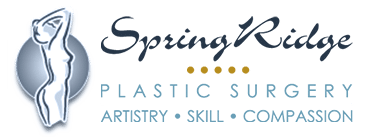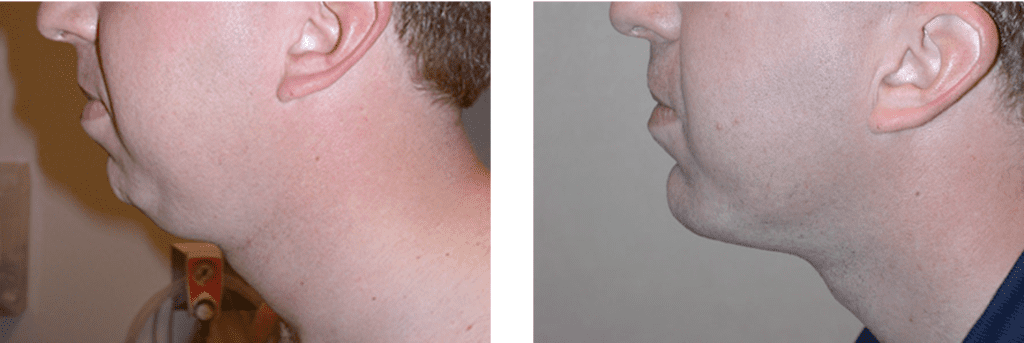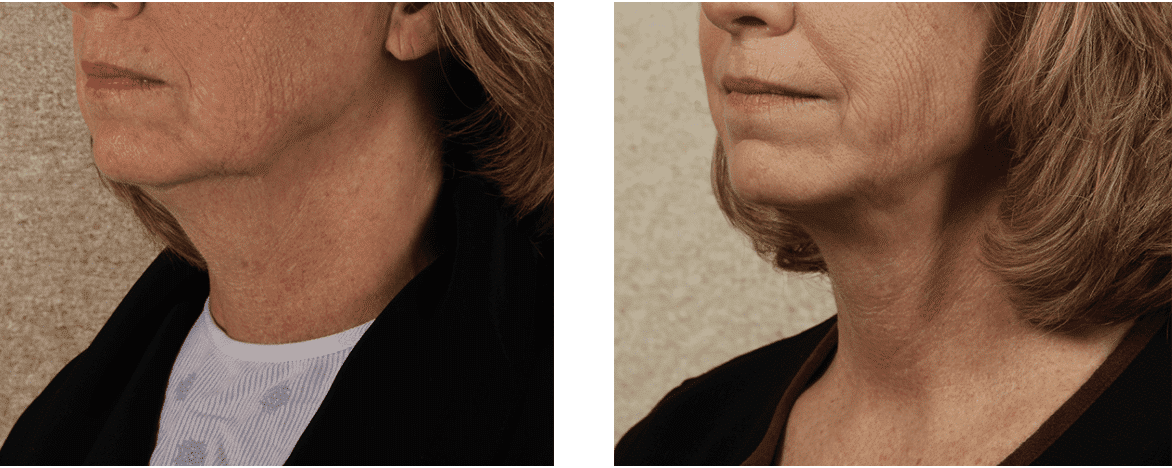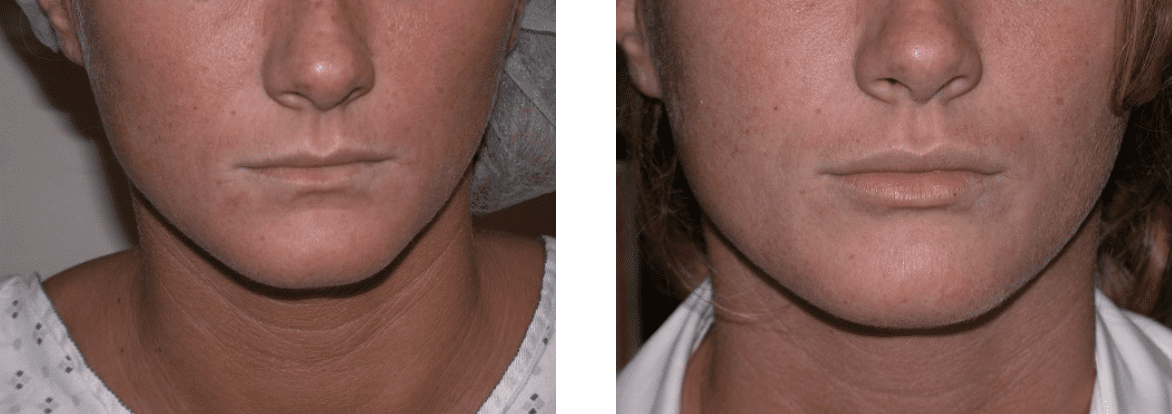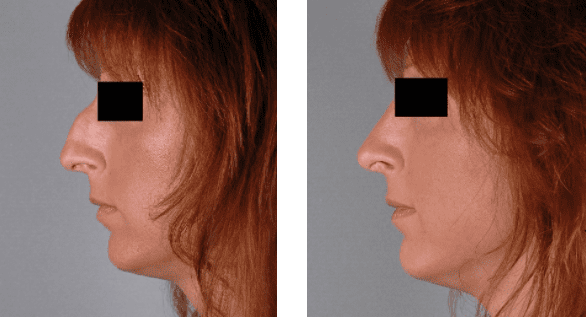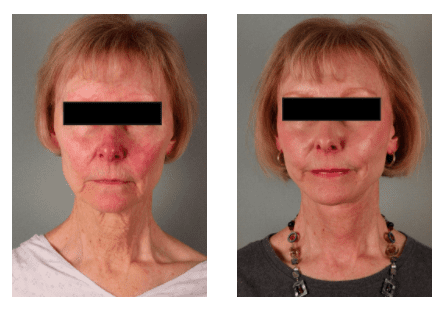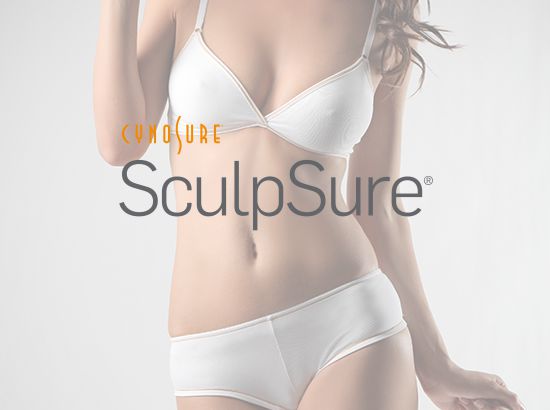Category: Facial Plastic Surgery
Plastic Surgery for Men – What Do You Need to Know?
3 Minute Read:
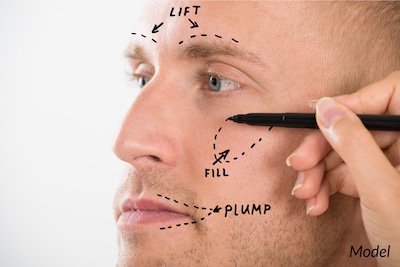
And while the vast majority of plastic surgery procedures are still performed on women, men are starting to feel more comfortable turning towards the knife to enhance their aesthetic appearance.
In the last decade, the number of male procedures has increased by over 200,000 with over 1.3 million cosmetic procedures performed in 2018.
What Plastic Surgery Procedures Do Men Prefer?
Although it is not a new concept, it is becoming more common for men to admit that they care about their physical appearance and are willing to consider surgery to achieve their aesthetic goals.
What Is Male Facelift Surgery?
Female facelift surgery targets fine lines, wrinkles, and jowls. Male facelift surgery also addresses fine lines, wrinkles, and volume loss but also highlights angular definition and youthful contours in the jawline, chin, and neck.
Male facelift surgery is performed by tightening and securing the underlying facial tissues and trimming excess skin from the lower two-thirds of the face. Incisions are hidden in the hairline and natural creases in front of the ear.
What Is Male Eyelid Surgery?
Much like female eyelid surgery, male eyelid surgery opens up the eye by removing skin and fat pockets from the upper and lower eyelid.
This surgical procedure is ideal for men with significant sun damage who are looking to restore youthfulness to their upper face.
What Is Male Liposuction?
Men often develop fat pockets on the abdomen, chest, neck, thighs, and love handles that do not respond to diet and exercise. Liposuction removes these fat pockets to reveal a more chiseled, athletic physique.
What Is Male Tummy Tuck Surgery?
Many women choose tummy tuck surgery following the negative effects of pregnancy. Men do not experience those same issues.
Instead, most men who choose tummy tuck surgery do so following significant weight loss to remove the excess skin on the abdomen that resulted from that loss.
What Is Gynecomastia Surgery?
Gynecomastia—more commonly referred to as man boobs—is the development of excess breast tissue in men. While some men can eliminate this excess with weight loss, other men require a surgical fix.
Gynecomastia surgery reduces the size of the male breast, restoring firmness.
How Does Male Plastic Surgery Differ From Female Plastic Surgery?
Plastic surgery for men does not differ that much from plastic surgery for women.
Although face and body contours are different between men and women—and the surgeries are tailored towards achieving those desired contours—the surgical techniques are the same regardless of whether they are being performed on a man or a woman.
Since plastic surgery uses universal concepts and techniques, men can feel confident that their surgery procedure will be safe, effective, and exactly what they are looking for.
How Will My Male Plastic Surgery Change My Life?
Plastic surgery is not a quick fix, nor will it eradicate all of your aesthetic concerns.
Plastic surgery enhances and strengthens your natural face and body contours and, when used appropriately, can promote confidence and a positive self-image.
Results from your plastic surgery, whether it is from a facelift, blepharoplasty, neck lift, liposuction, or tummy tuck surgery, require maintenance in the form of a healthy lifestyle. You should maintain a stable weight, stay out of the sun, and moisturize your skin to prolong its strength and elasticity.
How Can I Learn More About Male Plastic Surgery?
If you are interested in learning more about any of the above procedures, contact Dr. Schlechter at Spring Ridge Plastic Surgery by calling (610) 678-9200 or by filling out our online contact form.
The Rise in Social Media is Creating Selfie Awareness
In the wake of the “selfie” revolution, millennials are turning to cosmetic surgery in droves. Both surgical and non-surgical procedures have seen a consistent spike in recent years, and many attribute this increase to young men and women desiring to look better in their selfies.

Areas of Enhancement
Double Chin
Procedures that have seen a significant increase due to selfie awareness are those that improve the appearance of the dreaded “double chin.” Submental fullness has been damaging men and women’s self-confidence for decades.
There are both non-surgical and surgical procedures to treat a double chin. truSculpt™ is a non-invasive procedure that can target and treat submental fat. This procedure uses pulses of radiofrequency energy to destroy unwanted fat cells in the neck area while simultaneously shrinking skin to reveal a tight and firm jawline that will be noticeable in your selfies.
KYBELLA® is an FDA-approved injectable that targets and eliminates submental fat. It accomplishes this by absorbing and destroying the fat cells so that fat can no longer be stored beneath the chin. Most patients require two to six treatments to achieve their desired results. For patients with a higher degree of submental fullness, liposuction of the chin and neck combined with the skin-tightening procedure Renuvion™ can remove a double chin.
Nose
Another surgical procedure that has seen an increase thanks to selfies is rhinoplasty. Many patients are finding that the proximity of their camera to their face can sometimes flatten or accentuate the size and shape of their noses. For this reason, many young men and women are choosing to undergo nose surgery.
Rhinoplasty can reshape and recontour the nose to match your desired nasal appearance, whether it is for confidence-enhancing reasons or selfie-related concerns. Non-surgical can also be performed to help camouflage the nasal hump. Fillers in other areas of the nose can also help enhance the appearance.
Lips
While some individuals are born with naturally thin lips, other patients experience thinning of the lips with the progression of aging. Injectable fillers such as JUVÉDERM® Ultra XC, JUVÉDERM VOLBELLA® XC, and Restylane® Silk can enhance lip fullness, allowing millennials to achieve more luscious, full lips in just one treatment.
While the idea of looking better in selfies is leading many millennials to choose cosmetic surgery, it isn’t the only benefit that these procedures can provide. Both non-surgical and surgical cosmetic treatments can help individuals restore their youthful contours, improve their confidence, and increase their self-esteem.
To learn more about these treatments, contact Spring Ridge Plastic Surgery by calling 610-678-9200 to set up a consultation.
A Youthful-Looking Neck Leads to an Overall Youthful Appearance
Gravity, sun damage, and environmental factors can wreak havoc on your neck. The skin on the neck is relatively thin in comparison to skin elsewhere on your body, and unfortunately, while you take care of the skin on your face, the skin below the chin is not quite so nurtured. This combination causes premature aging of the neck, resulting in sagging skin, vertical banding, excess fat deposits, and jowls. Aging of the neck causes you to look older and heavier than you are. Neck procedures restore youthfulness to an aging neck and rejuvenate your appearance. At Spring Ridge Plastic Surgery, Dr. Schlechter offers both non-surgical and surgical options for enhancing the neck, including the revolutionary Renuvion™ skin tightening treatment.

Meet Renuvion™
Renuvion™ offers non-surgical and minimally-invasive skin tightening for your aging neck. This treatment uses a combination of helium plasma (made from helium gas) and radiofrequency energy to gently heat the upper layer of skin. This heating causes the skin to tighten and collagen production to increase, reducing fine lines, wrinkles, and vertical banding and tightening the skin around the jowls and under the chin. Because the precise delivery of the plasma and RF energy ensures that no surrounding tissue is damaged, Renuvion™ is one of the safest treatments for skin tightening. The results this procedure achieves can rival even that of a traditional neck lift, which is why Renuvion™ is gaining the nickname of the non-surgical neck lift.
Renuvion™ is offered as a stand-alone procedure for patients who are experiencing mild to moderate skin laxity on the neck, chin, and jowls or in combination with liposuction for patients who has have excess fat deposits on the neck or under the chin that is contributing to an aged appearance. Regardless of your procedure, Renuvion™ will leave you with firmer, tighter skin and more youthful contours.
Additional Neck Rejuvenation Procedures
PrecisionTx™
The PrecisionTx™ is known as the laser neck lift. This minimally invasive procedure uses laser liposuction to destroy excess fat and tighten loose skin. Results from this procedure begin to show immediately and improve over the following months as collagen production increases.
Neck Lift
The results of a traditional neck lift speak for themselves. While it is more invasive than Renuvion™ and PrecisionTx™, a neck lift rejuvenates an aging neck by enhancing chin and jawline definition, slimming the neck, and smoothing the skin. This surgical procedure removes excess fat and skin through incisions made under the chin or behind the ears.
Whichever form of neck rejuvenation you prefer, Dr. Schlechter can help you regain a youthful neck contour. Contact Spring Ridge Plastic Surgery today by calling 610-678-9200 to set up a consultation.
Chin Implant and Neck Liposuction
A strong, defined profile is a sign of both beauty and masculinity by today’s beauty standards. Strong features, balance, and symmetry, are all sought after as part of an ideal appearance. If your features are soft and lack definition, the lines of your face may blend into your neckline, but by combining a chin augmentation and targeted neck liposuction, you can dramatically enhance the features of your lower face.
Chin Implant
A chin implant, or mentoplasty, can help you achieve greater definition and facial structure. It gives your jaw a clear transition into your neckline and can even address features that are disproportionate. During your procedure, Dr. Schlechter will insert a small implant into your chin to augment its shape. There are many different sizes of implants, and Dr. Schlechter will help you determine which option will best enhance your facial balance and profile.
Dr. Schlechter performs chin implant surgery as an outpatient procedure. An incision will be made inside your mouth or in the natural crease under your chin to minimize any visible scarring creating a profile that is as flawless as possible.
Neck Liposuction
Having a strong, structured chin will give you a defined jawline. However, sagging skin under the chin can minimize the results of chin augmentation. Adding neck liposuction to your chin augmentation procedure can further define the contours of your lower face and emphasize the lines between your chin and neck.
Through the use of a cannula (a small suction device), Dr. Schlechter will remove excess fat deposits with precision, making the contours of your chin and neckline more pronounced and seamless. He offers multiple liposuction techniques, including:
- Smartlipo™
- body-jet® and AquaShape®
- Ultrasonic-assisted liposuction (UAL)
- Power-assisted liposuction (PAL)
Neck liposuction is only beneficial for those who have minimal fat deposits and skin that still has elasticity. If your skin cannot bounce back into shape after fat removal, neck liposuction alone won’t provide you with the best possible contouring. For patients who have sagging skin, a neck lift may also be necessary to attain the best results.
If you are interested in chin augmentation or liposuction with or without a neck lift and you would like to see if you are a candidate for both procedures, please contact our office at 610-678-9200 to set up a complimentary consultation with board-certified plastic surgeon Dr. Benjamin Schlechter.
Neck Lift Options: Which One Do You Need?
Neck rejuvenation can be performed using various techniques. If your neck has excess fat, muscle banding, sagging skin, wrinkles, or all of the above, one of the following techniques can help you achieve a more youthful look. With the appropriate technique selected for your needs, your neck lift will create a more toned, defined, youthful, and slender neck appearance.
Option 1: Traditional Neck Lift Surgery
A traditional neck lift is a surgical procedure that can be performed alone or in combination with a facelift. The surgeon places incisions under the chin and/or behind the ears. During the procedure, the surgeon tightens or repositions the muscles, removes excess skin and fat, and tightens the skin.
This procedure is appropriate for individuals who have neck muscle banding, sagging skin, excess fat, and moderate to severe wrinkles. Patients who have most or all of these symptoms of neck aging will likely benefit more from traditional neck lift surgery as opposed to other neck lift techniques.
Option 2: Liposuction
Liposuction of the neck is a surgical procedure that removes excess fat from the neck. The surgeon places one or more tiny incisions in the neck and inserts a thin, hollow tube. Excess fat is suctioned out through the tube to trim down the neckline.
This procedure is appropriate for individuals whose primary complaint is a double chin or hanging fat in the neck. Patients who have additional aging indicators may combine neck liposuction with another neck lift technique for further rejuvenation.
Option 3: BOTOX® Cosmetic Injections
BOTOX® Cosmetic is a protein neurotoxin that can be used to minimize wrinkles. The surgeon can inject BOTOX® Cosmetic directly into the neck muscles to relax them so that they appear smoother and more natural. This will soften the appearance of the neck, eliminate a “turkey wattle,” and smooth away wrinkles.
This procedure is appropriate for individuals with neck muscle banding, excess neck wrinkles, and/or a “turkey wattle.” BOTOX® Cosmetic is a temporary solution that requires re-injection approximately every few months to maintain the results.
Option 4: PrecisionTx™
PrecisionTx™ is a minimally invasive neck lift procedure that can tighten sagging skin and remove excess fat. The procedure can produce results comparable to those of a traditional neck lift but without major surgery, scarring, or a lengthy recovery. The surgeon makes three small incisions and inserts a thin, hollow tube with a fiber optic cable. This causes the tissues to heat, melting the fat for easy extraction and stimulating collagen production to tighten the skin. After PrecisionTx™, results are seen immediately and improve over the next six months.
This procedure is appropriate for individuals with minimally sagging skin, excess fat, and wrinkles in the neck area. It is especially suited for those who prefer a minimally invasive procedure or who are not candidates for traditional neck lift surgery.
The Best Neck Lift Technique for You
These descriptions may have given you a better idea of what techniques you should consider for your neck lift. Ultimately, the best neck lift technique for you will be decided during your consultation, as Dr. Schlechter will be able to identify which treatment is most appropriate based on all relevant factors. Even if you are considering a traditional neck lift, but you do not qualify for the procedure, you may still achieve desirable results with PrecisionTx™ or other neck lift techniques. Dr. Schlechter will help you determine the ideal treatment with your best interests in mind. With his help, you can recapture a more attractive and youthful neck.
Fat Transfer for Facial Rejuvenation
Did you know that facial volume loss can make you look older even if you don’t have many wrinkles? While fine lines and wrinkles can add years to a person’s appearance, volume loss in the cheeks and around the eyes creates a gauntness that can even more noticeably expose an aging face. In contrast, a youthful face has smooth skin along with defined contours and full cheeks. Fat transfer is a unique facial rejuvenation procedure that reverses volume loss and restores the soft facial contours associated with youth and beauty.
Why Fat Transfer?
The fat transfer procedure harvests excess fat from another area of your body and then injects it into the face. Contrary to the general perception that fat is the enemy, facial fat is an essential part of a youthful appearance. Children’s faces often have chubby cheeks, and even through the teen years, there is a natural roundness that depicts a youthful quality in the face. The gradual depletion of volume over time leads to a progressively aged appearance. Using fat to restore lost facial volume allows you to recapture the softness and definition of your youth.
The Fat Transfer Procedure
To harvest the fat that is to be transferred to the face, Dr. Schlechter performs liposuction on another area of the body that has excess or stubborn fat, such as the abdomen, hips, or thighs. Dr. Schlechter uses the revolutionary AquaShape® system for the liposuction portion of the fat transfer procedure. This technology uses a water-jet to gently separate the fat cells from the surrounding tissues, which improves the survival rate of the harvested fat cells and allows more fat to be extracted. Once removed, the fat cells are processed, purified, and strategically reinjected into specific areas of the face to enhance facial definition and vitality.
Areas of Focus
Fat transfer to the face can rejuvenate thinning areas of volume loss, including the following:
- Hollows under the eyes
- Flat, poorly defined cheeks
- Volume loss in the temples
- Nasolabial folds (creases around the mouth and nose)
- Thin or thinning lips
With the addition of new fat, these areas will have more volume and will look more vibrant, full, and youthful.
Expected Results
Patients that undergo fat transfer for facial rejuvenation can expect long-lasting results. Because Dr. Schlechter utilizes the AquaShape® method of liposuction, the fat that is injected into the face has a greater likelihood of survival. This means that unlike other fat transfer techniques (for which the fat has an unpredictable and relatively low survival rate), the results are more predictable and maintainable.
Because the body will absorb some of the injected fat cells, multiple sessions may be needed to achieve the desired results. Within a few months after the treatment, the final results will be visible and permanent. Patients can also enjoy the benefits of fat removal at the harvest site because it slenderizes the body in addition to refreshing the face.
Fat transfer can rejuvenate an aging face, restore soft contours, and recapture youthful definition and fullness. Dr. Schlechter also performs fat transfer procedures for breast augmentation, buttock enhancement, and other purposes.
To learn more about how the fat transfer procedure can rejuvenate your appearance, request your complimentary consultation with Benjamin Schlechter, MD, FACS. Please call us at (610) 678-9200 or at your earliest convenience to schedule your appointment.
Rhinoplasty Recovery Guideline
The recovery after any major surgery is usually a cause for concern among patients. People prefer to know what to expect so that they can be prepared for it. The rhinoplasty recovery experience is based on patient health, ability to heal, surgical technique, and the surgeon. While there is some variability, the following guideline will help you understand what to expect during your recovery after rhinoplasty.
How Surgical Technique Affects the Recovery
The surgical technique during a rhinoplasty is a critical influencing factor for recovery. For example, an open rhinoplasty, which usually makes more adjustments to the nasal tissues than a closed rhinoplasty, may result in more postoperative swelling or a longer recovery. Patients who require the breaking of nasal bones, significant tip work, and/or extensive tissue dissection or elevation may also expect a longer recovery with increased swelling, soreness, and bruising. Surprisingly, rhinoplasty surgery is typically minimally to non-painful. Knowing as much as possible about the details of the surgical technique that your surgeon will use during your rhinoplasty will help you better prepare for your recovery.
What to Expect During Recovery
Splint and Packing
Immediately after rhinoplasty, a splint will be applied to help your nose maintain its new shape through the healing process. Soft splints or nasal packing may also be placed inside the nose to stabilize the internal nasal structures. Nasal packing, if inserted, is removed within a few days after surgery.
Aching/Discomfort
A dull headache or aching in the nose can be common for the first few days after the procedure. Pain is not usually significant, and most patients only need pain medications for a day or two (if at all). Severe pain is rare; should you feel severe pain, consult your surgeon right away as you may have an infection or other concern that needs immediate attention.
Puffiness/Congestion
A feeling of puffiness or congestion can persist for the first few days after surgery. This puffiness is caused by swelling inside the nose and will temporarily inhibit your sense of smell. Noticeable nasal congestion may persist for several weeks, but it should begin to ease within a few days after the procedure.
Numbness
After rhinoplasty, your nose may feel slightly numb, especially in the tip. Certain facial expressions may feel strange or unusual, but this is only temporary. As the numbness wears off over the following weeks and months, your nose will begin to feel normal again.
Nasal Breathing
If you underwent correction of a deviated septum as a part of your rhinoplasty surgery, you might notice an improvement in nasal breathing shortly after the procedure. As the swelling subsides, this will improve even more noticeably. Patients who did not have major breathing difficulties before the procedure may be more bothered by the initial congestion. As congestion subsides, you will be able to breathe more clearly through your nose.
Bruising
Bruising is also common during the first week of recovery after rhinoplasty. These bruises may spread across your cheeks. The degree of bruising can vary but is usually minor to moderate. Some of the factors that influence bruising include surgical technique, age, medications, skin thickness, and bleeding disorders. You can minimize postoperative bruising by avoiding blood thinners (such as ibuprofen or aspirin) for at least two weeks before surgery and continuing to avoid them until your surgeon has indicated that it is safe to use them again. Bruising will be mostly gone by one week after the surgery.
Swelling
You should expect to experience swelling after your rhinoplasty. Postoperative swelling will temporarily affect your comfort level and congestion and may cause your upper lip to feel stiff for a few weeks. Much of the swelling will go away within three weeks after the surgery and will continue to subside. By six weeks after surgery, the majority of swelling will dissipate, but minor swelling can take up to a year to fully resolve.
Things to Do
Be sure to follow your surgeon’s post-operative instructions during your recovery. Take all medications as instructed, and keep your head elevated after your surgery to reduce congestion and swelling. Use cool compresses for the first two days to reduce swelling and bruising. Use a saline spray as instructed by your surgeon to help with any dryness or nasal crusting. Get lots of rest, eat well, and engage in light activities such as walking to promote healthy healing.
Things to Avoid
During the first few weeks after your rhinoplasty, take care to avoid excessively dry environments. You may need to use a humidifier if you live in a dry climate. Avoid nasal irritants and allergens. It is also important to avoid blowing your nose after rhinoplasty until your surgeon has given you permission to do so. Bending over is not recommended for at least three weeks, as this can increase swelling and aching. Avoid exercise for the allotted timeline of four to six weeks, and avoid activities that will be likely to injure or damage your nose. All the same, there is no need to be overly cautious and avoid touching your nose entirely.
Rhinoplasty Timelines
The first few days are the toughest after rhinoplasty. By day three or four after surgery, you will likely be feeling on the mend. You may be able to return to work within a week after your surgery, at which point you will likely feel more socially presentable. You can apply facial makeup at this point. After two weeks, most people will not be able to immediately tell that you underwent nose surgery.
Limit your physical activity for a full four to six weeks. If you have any major social events such as a wedding in the future, schedule your rhinoplasty at least a few months beforehand to allow plenty of time for healing and for swelling to subside. Lastly, remember that internal swelling may take up to a full year to resolve, at which point you can finally celebrate your complete rhinoplasty results.
Rhinoplasty can enhance facial harmony and improve the appearance of the nose. If you have any more questions about rhinoplasty recovery, contact Dr. Benjamin Schlechter for a complimentary, personal consultation. To request your appointment, please call (610) 678-9200 or contact us online today.
Be Choosy When Choosing Your Facelift Surgeon
If there’s ever a time to be “choosy,” it’s when you are selecting a surgeon to perform your facelift. The wrong choice could lead to disastrous consequences while the right choice could mean working with a surgeon who understands your goals and gives you even better results than you dreamed. Here are some tips for selecting a good surgeon that can give you a facelift with beautiful, natural-looking results.
What to Look For In a Facelift Surgeon
Board Certification in Plastic Surgery
Becoming certified by the American Board of Plastic Surgery (ABPS) requires the surgeon to go above and beyond in the field of plastic surgery. A board-certified plastic surgeon has completed the required education and training in a specialty of medicine that is beyond the minimum requirements for obtaining a medical license. Additionally, the surgeon has passed specific examinations in the specialty of plastic and reconstructive surgery. Board-certified plastic surgeons demonstrate extensive knowledge, training, and expertise in the field of plastic and reconstructive surgery.
Membership in ASPS and ASAPS
The American Society of Plastic Surgeons (ASPS) and the American Society for Aesthetic Plastic Surgery (ASAPS) have rigorous standards for their member surgeons. These requirements include board certification in plastic and reconstructive surgery, continuing education, comprehensive exams, performing surgery only in accredited facilities, and more. A facelift surgeon you can trust will be a member of these organizations.
Years of Experience
“Practice makes perfect” is not an empty phrase. Experience is the best teacher and provides many different circumstances in which to work so that the surgeon is ready for anything he may encounter. If a problem occurs during the procedure, an experienced surgeon will be better prepared to identify the situation quickly and navigate around it safely. Choosing a plastic surgeon with years of experience performing facelifts is definitely something you should consider when choosing your facelift surgeon.
Forward Thinking Strategies
Forward-thinking surgeons choose to learn about and use the best techniques, technologies, and supplies available. For example, the most forward-thinking facelift surgeons are not using drains but are using TISSEEL fibrin sealant to reduce bleeding and drainage. A surgeon that is using the latest technologies and techniques can usually provide the safest and best experience.
Other Important Points
Once you’ve narrowed your options, be sure to have a list of questions to ask your surgeon during your consultation. You should feel completely satisfied and comfortable with the surgeon’s answers to your questions and how the surgeon responds to you. Look at as many of the surgeon’s before and after photos as possible because these will give you a visual indicator of the quality of the surgeon’s results. Look carefully at how the skin pulls, how clean and inconspicuous the scars look, etc.
The best facelift surgeon will also recommend whether complete facial rejuvenation would be better accomplished with additional procedures as well. Yours may recommend combining your facelift with an eyelid lift, brow lift, and/or laser resurfacing around the mouth and under the eyes. The most natural facelift results are achieved with an experienced and skilled surgeon who understands precisely what your individual needs are and how to help you.
Benjamin Schlechter, MD, FACS, is a forward-thinking, board-certified plastic surgeon who meets all the above criteria and more. With more than 20 years of experience and memberships in the ASPS and ASAPS, Dr. Schlechter is well prepared to answer your questions and perform your facelift to your complete satisfaction. To schedule your complimentary consultation, please call (610) 678-9200 or contact us online today.
Daddy Do-Over

Procedures to Include in Your Daddy Do-Over
Like the Mommy Makeover, the Daddy Do-Over can be entirely customized to include several different procedures to reshape your body. When you meet with Dr. Schlechter, he will evaluate your goals and recommend the most appropriate procedures for your needs. For example, women who get a Mommy Makeover often undergo tummy tuck surgery, breast surgery, and/or liposuction. Likewise, it is common for men to undergo tummy tuck surgery, liposuction, and/or gynecomastia (enlarged breasts) surgery as part of the Daddy Do-Over.
- Liposuction: Weight gain leads to fat accumulation in many areas of the body, especially the abdomen, thighs, hips, back, and chest. Liposuction permanently extracts excess fat from the body to improve its contour. Dr. Schlechter will insert a thin, hollow tube through tiny incisions into the target area(s) and suction out the fat deposits. Afterward, areas of fullness will be firmer and flatter, and your body shape will be more attractive and masculine.
- Tummy Tuck: For men with stubborn abdominal fat, loose abdominal skin, and lax abdominal muscles, a tummy tuck may be more fitting. Dr. Schlechter will make an incision along the lower abdomen through which he will tighten the abdominal muscles and remove excess skin and fat. The result of tummy tuck surgery is a flatter, firmer, tighter, and more defined abdomen.
- Gynecomastia Surgery: Some men develop excess breast tissue or fat in the chest area. Dr. Schlechter can perform gynecomastia surgery to create a firmer and better-contoured chest. First, he will remove excess fat from the chest by performing liposuction, after which he may use surgical excision to remove excess skin and breast tissue if necessary.
Additional Options
The above three procedures will go a long way in enhancing the male body shape. However, if you are in need of other procedures instead of or in addition to these procedures, Dr. Schlechter can go over other options with you. These may include a facelift, KYBELLA®, neck lift surgery, eyelid surgery, and more. Your Daddy Do-Over can help you reclaim your youthful, masculine body so that you can feel more confident and attractive.
If you are interested in learning more about the Daddy Do-Over and how it could help you, schedule your complimentary consultation with Dr. Benjamin Schlechter today. Dr. Schlechter is a board-certified plastic surgeon and has helped thousands of patients over more than 28 years. To schedule your appointment, call (610) 678-9200 or fill out our online contact form today.
Eyelid Lift or Brow Lift: Which Do I Need?
Eyelid Lift and Brow Lift, Wyomissing, PA

Eyelid Lift
Eyelid lift surgery, also known as “blepharoplasty,” removes stretched skin and repositions or removes fatty tissue to create a more defined and rejuvenated eye appearance. It can be performed on the upper eyelids, lower eyelids, or both. Upper blepharoplasty uses an incision along the natural crease of the lid, and lower blepharoplasty may use an incision just below the lower lashes or a transconjunctival incision within the lower eyelid.
Blepharoplasty is ideal for correcting the following:
- Loose, sagging skin on the upper or lower eyelids
- Folds on the upper lids
- Puffiness in the upper lids
- “Bags” in the lower lids
- “Crepe-paper skin” below the eyes
- Drooping lower eyelids that pull the skin down and reveal white below the iris
Brow Lift
When it’s the actual eyebrows that hang down and hood the eyes, a brow lift, or “forehead lift,” is needed. Dr. Schlechter generally uses the endoscopic technique for his forehead lift patients, which employs a surgical video device called an endoscope and other surgical instruments inserted through small incisions along the hairline. Through these small incisions, Dr. Schlechter can tighten loose skin and adjust the underlying muscles that contribute to frown lines. Dr. Schlechter also performs coronal, temporal, trans-palpebral, and suprabrow lift techniques. Dr. Schlechter will determine the best technique to improve your unique condition during your consultation.
Brow lift surgery is ideal for correcting the following:
- Horizontal lines across the forehead
- Deep vertical furrows between the brows (“frown lines”)
- Loose skin on the forehead
- Low-hanging brows
BOTOX®
BOTOX® Cosmetic is a neurotoxin formula that is injected into the muscles that cause fine lines and moderate to severe wrinkles, and it can give a little bit of lift to the brow area. This option is not for those with significant sagging in the upper face, and results generally last three to four months, so repeat treatments are needed to maintain results. BOTOX® injections are ideal for those who want quick rejuvenation without the risks and downtime associated with surgery.
BOTOX® Cosmetic is ideal for correcting the following:
- Vertical furrows between the brows (“frown lines”)
- Fine lines at the outer corners of the eyes (“crow’s feet”)
Combining Procedures
Dr. Schlechter recommends that his surgical patients receive BOTOX® treatment a month in advance of brow lift surgery to ensure their muscles are relaxed for the procedure. If needed, Dr. Schlechter may recommend that brow lift surgery and eyelid lift surgery be performed together to achieve complete facial rejuvenation.
If you would like to rejuvenate your facial appearance, please call (610) 678-9200 or fill out our online contact form to schedule your complimentary consultation with our board-certified plastic surgeon, Dr. Benjamin Schlechter. During your consultation, Dr. Schlechter will evaluate your needs and desires to determine the best procedure(s) to meet your goals.
